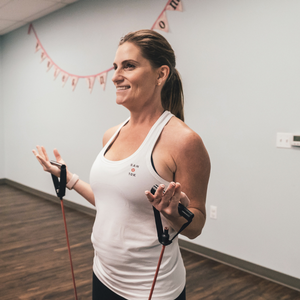Rachel Nicks shares, "It is important to move throughout your labor to help your baby travel down the birth canal, as well as to help you deal with the discomfort of contractions. Contractions are like a wave: they start low, peak, and then bring you back to shore. Try to ride the wave of each contraction and know that it will end. There is always a beginning, middle, and end.
My advice: throw away clocks! While initially, timing contractions can be important to know if the labor is beginning, in the grand scheme of the birthing process, time is not useful to you. Trying to keep track of time can become frustrating and discouraging. Every birth process is different. Dilation is not some perfect formula. For instance, after 10 hours of labor, you can be only 1 cm dilated, get to 6cm in 2 hours, and be fully dilated in another 4 hours.
This is why I suggest that you birth with your body and not your brain. Your brain will try to make sense of things which can cause you to get anxious or attempt to control the uncontrollable. The most difficult aspect of birth is the unknown. Find tools, relaxation techniques, and breathing techniques that help you calm your mind. Some examples: dim the lights, play your favorite music, get electric tea lights, pray or meditate, wear your favorite bra or gown, or even be fully nude (comfort is key!). Try to rest between contractions and save your energy to push.
When the time comes to push, be encouraged to try various pushing positions. If you have not had an epidural, you will have better use of your legs and can get more creative, but avoid just pushing on your back if possible. Try pushing on your side with one leg up, squatting, or request the squat bar on your bed, which will allow you to pull down on the bar while you squat and push. Pulling helps you activate your core and makes your pushing more effective. Squatting is typically preferred because your pelvic outlet is the widest, and you’re also working with the force of gravity."









